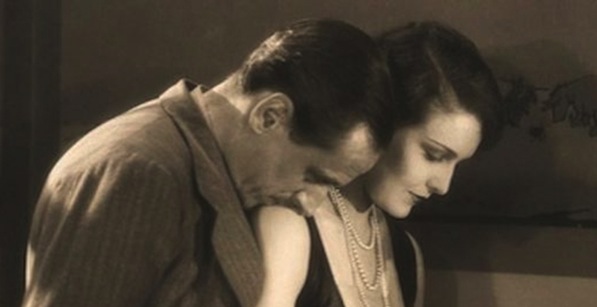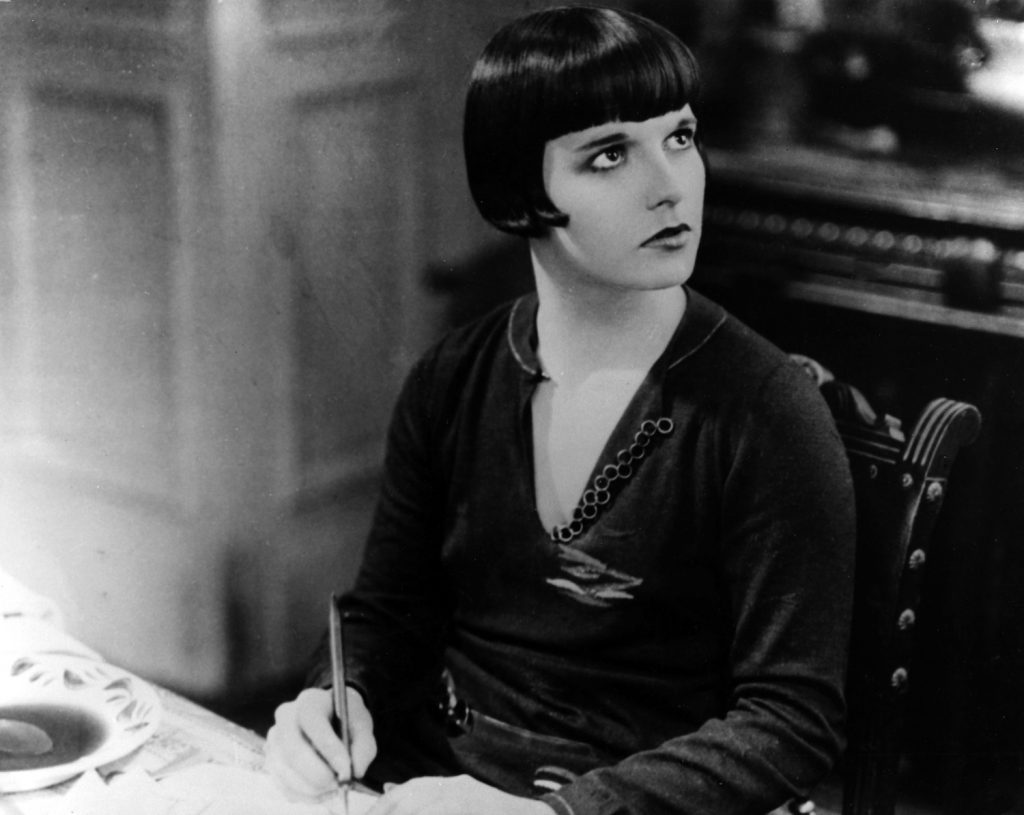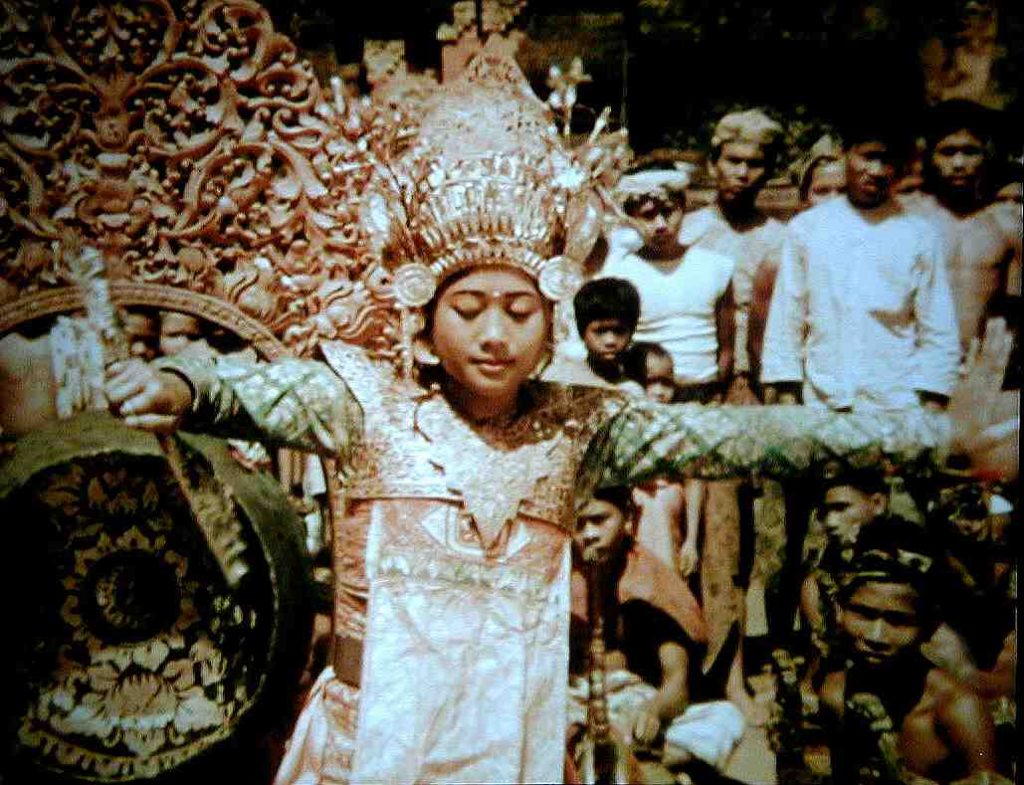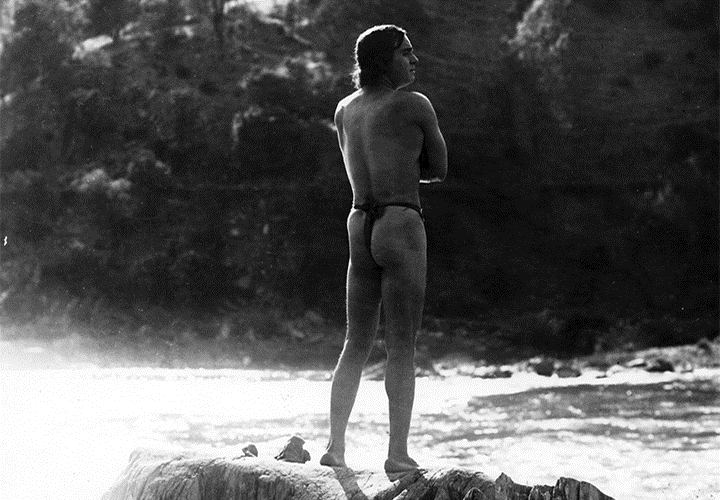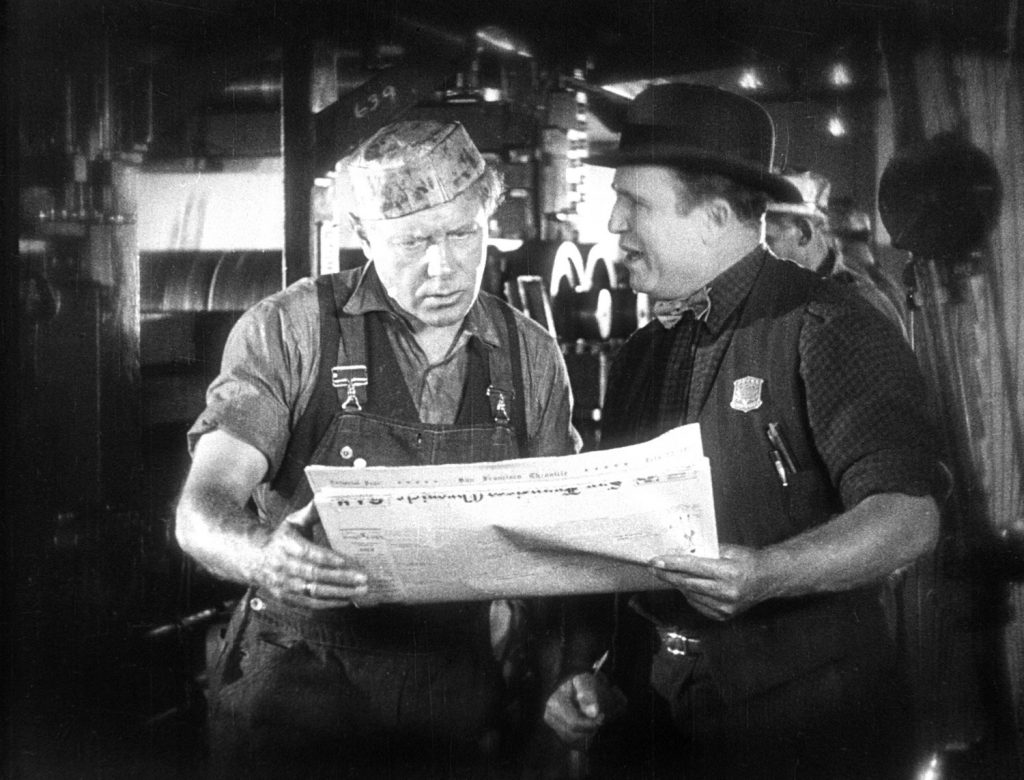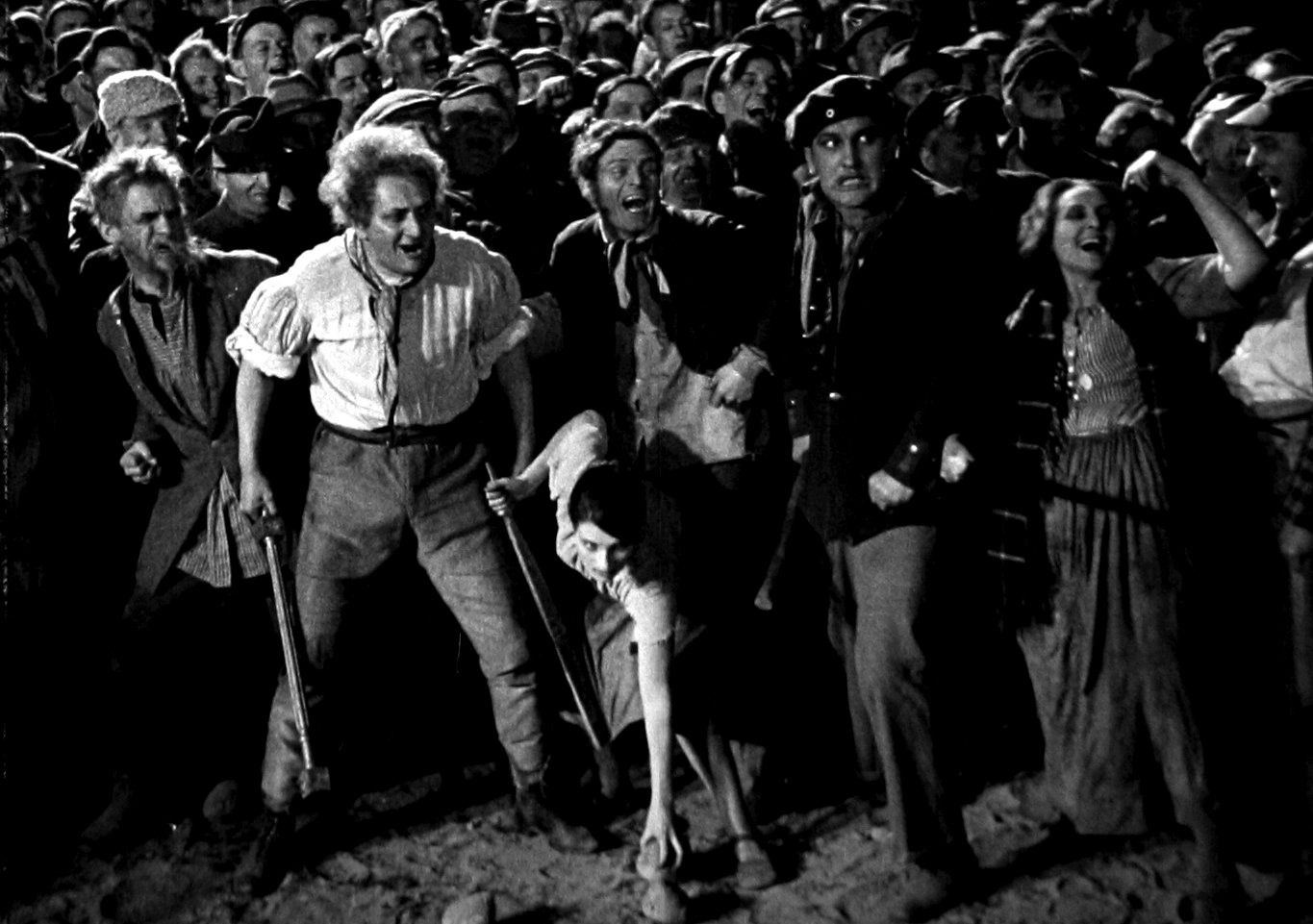I knew that San Francisco Silent Film Festival is the premiere silent fest in America, but I was elated to learn from Céline Ruivo, curator of the film collection at the Cinématèque Française and a special guest at this year’s festival, that in Europe, SFSFF has a reputation as one of the premiere silent film festivals in the world. It has earned that reputation. In its now four-day length (three full days plus a gala opening night), it is both selective and expansive in its programming, with rediscoveries and new restorations along with well-known audience favorites and world masterpieces.
The opening night program qualifies as both rediscovery and revival. Prix de Beaute (1930, France), directed by Augusto Genina from a screenplay by G.W. Pabst and Rene Clair (who originally developed the project for himself), is famous largely for its star: it was Louise Brooks‘ third and final starring role in her brief European vogue. It was also released in both silent and talkie versions, and the sound version (with La Brooks dubbed by a French actress) is what most people have seen. The recently restored silent version is both longer and more interesting, even while it remains a minor coda to her Pabst masterpieces. The story of a newspaper secretary who wins the Miss Europe beauty contest takes abrupt tonal turns from bubbly romantic comedy to high-society spectacle to working class drama to operatic melodrama. But at its best it offers a look at working class life at work and at play in 1930 Paris and it sweeps us up in the rush of Brooks’ fairy-tale journey to stardom. Her fresh, natural presence in the world of late silent-era acting makes her all the more guileless and innocent in a culture where every man wants to possess and control her.
The programmers are as careful with the musical component as they are on the film materials. Every film is accompanied by live music from world-class silent film musicians. The opening night films was accompanied by Stephen Horne, a solo musician as one man band: he plays piano, flute and accordion (often two at once), and plucks strings of piano to suggest a Spanish guitar in a nightclub scene. The affectionate joke around the theater is that Horne returns to SFSFF every year because they get a combo for the price of a solo act! Also returning this year are the Mont Alto Motion Picture Orchestra from Colorado and the Mattie Bye Ensemble from Sweden, while German pianist and organ player Günter Buchwald made his SFSFF debut on four programs.
In this company of the greatest of the greats from around the world, the musical highlight came from San Francisco itself: a collaboration between Gamelan Seka Jaya, a Balinese gamelan ensemble, and the Club Foot Orchestra performing an original score for Legong: Dance of the Virgins (1935, U.S./Bali), one of the final two-color features and one of the last of the silent films produced for American distribution. Shot on location in Bali with a non-professional cast, it’s not a documentary but contrived cinema anthropology by way of a Tabu-like story of young love, ostensibly based on real-life cultural details explained in simplified intertitles and illustrated through the spectacle of dances and rituals and lots of topless young women. It’s real travelogue stuff but lovely to look at (this primitive color has its own beauty) and the music was astounding, a magnificent conversation of East Asian and European traditions. The stage was packed with gamelan musicians and had Club Foot in the orchestra pit, yet the music was always in service to the film experience.
SFSFF has been expanding its mission with each edition. This year, it went to the next step: two restorations initiated and co-produced by SFSFF, supervised by board president Rob Byrne, made their respective world premieres at the festival.
Allan Dwan‘s The Half-Breed (1916, US), a California frontier western starring Douglas Fairbanks, has been available before in a re-edited 1924 re-release held by the Cinématèque Française. The CF materials are the foundation of the reconstruction, but new footage fills out the film and sharpens the film’s themes with a more nuanced and interesting drama. The conflicted portrait of racism and prejudice through the filter of history decries intolerance without defying it (the film can’t let even as noble a half-breed as Fairbanks walk off into the sunset with a white woman), yet vividly lays out the hypocrisy of prejudice and white superiority in scene after scene. At the “Amazing Tales from the Archives” presentation on Friday morning, Byrne presented a step-by-step look at the process of restoration, from research to release.
The Last Edition (1925, U.S.) gave San Francisco audience some hometown glory. The independent newspaper drama, directed and produced by Emory Johnson, was shot largely on location on streets of San Francisco and in the press rooms of the San Francisco Chronicle. Byrne introduced it as a “meat and potatoes” film, and the writing and plotting is pure dramatic melodrama cliché, with all the tropes tossed in, all sorts of complications and extraneous characters, and not one but two chase sequences in the race to clear the name of an innocent and catch the bad guys red-handed. Given that, it’s remarkably entertaining, with a swift pace, likable characters, and great SF locations, and it received its premiere with the most appreciative audience it will surely ever get: a sold-out hometown crowd at the Castro cheering every yesteryear landmark. Stephen Horne’s piano score pounded away the runaway final act, helping the audience whisk past every continuity glitch and sloppy narrative distraction.
In light of the “Hitchcock 9” series of silent currently making the rounds, The First Born (1928, Britain), the feature film directorial debut of actor, author, and playwright Miles Mander, is especially interesting, in large part because his screenplay collaborator is Alma Reville, Hitchcock’s wife and longtime (and usually uncredited) creative partner. The direction of this drama of betrayal and hypocrisy is inventive and striking, and like Ernst Lubitsch, Mander finds visual ways to capture the kind of verbal wit and sophistication of drawing room dramas. It makes me want to seek out more of Mander, in part to see if he continued this kind of cinematic creativity and narrative invention, or if Reville was responsible for that visual wit and sophistication.
According to the program notes (SFSFF puts out a great program, by the way, and this year is the best yet), The Weavers (1927, Germany) has been called the German Potemkin. Based on a real life incident (the 1844 Silesian Weavers revolt) and a controversial play by Gerhart Hauptmann, this rousing call to collective action is like a Soviet political drama through the lens of German expressionism, from a village set of old world cottages out of a Caligari dimension to graphic intertitles that carry the passion and commentary in their very design. Günter Buchwald, who premiered his piano score at Pordenone last year, did more than accompany the film. He gave us a history lesson, introducing the 19th-century protest anthem “The Weavers Song” featured prominently in his score and translating the lyrics into English before singing them defiantly in German in the opening of the film. It was the most rousing experience of the festival.
A new restoration of G.W. Pabst’s landmark social drama The Joyless Street (1925, Germany), a savage portrait of Germany after World War I, reveals a much more ambitious film than previously seen, filled with decadence, desperation, and degradation and set to a drumbeat of social drama drawn in stark images and situations. The film is still missing about half an hour of footage yet it is overloaded with storylines, top-heavy with major characters, and at times confusing. It is also hard to shake off the dire portrait presented by Pabst and it confirmed Greta Garbo is a superstar in the making.
Author, historian, and Oscar-winning animator John Canemaker presented Winsor McCay: His Life and Art, a special program that explored the legacy of the great comic strip artist as a pioneering animator. The talk was illustrated with still artwork and complete screenings of McCay’s first four animated shorts: “Little Nemo” (1913), “How a Mosquito Operates” (1912), “Gertie the Dinosaur” (1914), with Canemaker taking the McCay live role in the interactive stage presentation, and “The Sinking of the Lusitania” (1918), which reimagined the possibilities of animation as a dramatic medium. It gave me a whole new appreciation for McCay’s invention as an animator and a visual storyteller.
Those are just a few highlights in a festival of fourteen feature films, a programs of shorts and two educational presentations, all of which were rewarding. The only disappointment for me: the announcement that next year’s festival will move from July to late May. After five years of attendance, 2014 is the first festival I won’t be able to attend. Hopefully that won’t be the case for you.

